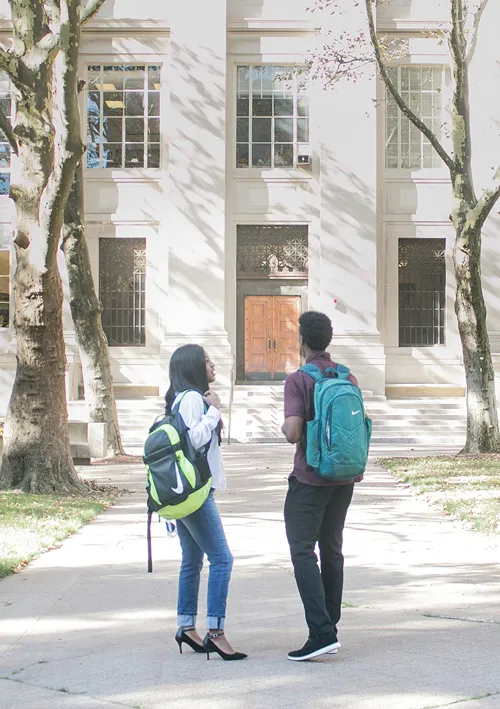Helping Your High Schooler Choose the Right College Path
Your teenager’s senior year brings a mix of excitement and worry as they get ready to leave home. Talking openly about what they love, what they dream about, and what feels realistic matters more than ever during these final months together.
Success looks different for every kid, and whether they pick a four-year university, community college, or trade school depends on who they are as a person. Finding the right fit for your teen’s personality, goals, and how ready they feel to be on their own gives them the best shot at doing well.
Understanding and Planning for College Costs
Starting money conversations early saves everyone from scrambling later. Your teen deserves to know what college costs before they fall in love with schools you can’t afford. Talking to your kids about money helps you both make choices based on reality rather than wishful thinking.
You’ve got options for paying college bills beyond just taking out massive loans. Scholarships and grants don’t need to be paid back, work-study programs let students earn money while in school, and whatever your family manages to save all help reduce what you’ll owe later. Smart families use several different funding sources instead of relying on one big loan.
Building a realistic budget that includes everything from tuition to late-night snacks gives you the full picture of what college costs. Working through real numbers together helps your teen understand what they’re getting into financially and prepares them to handle money responsibly once they’re on their own.
Saving for College and Planning Long-Term
Starting a college savings plan, even with modest amounts, can significantly impact a family’s financial flexibility when education costs arrive. Early preparation allows families to take advantage of compound growth and reduces pressure during the expensive college years. Parents who begin saving systematically often find multiple ways to build education funds through careful budgeting and strategic planning.
A 529 education savings plan offers tax advantages specifically designed for education expenses, making it a popular choice for long-term college planning. These plans allow contributions to grow tax-free when used for qualified education expenses, potentially saving families thousands of dollars over time. Some states also provide tax deductions or credits for contributions to their 529 plans.
Alternative savings strategies include automatic transfers to dedicated education accounts, investing in index funds, or using high-yield savings accounts for shorter-term goals. The key is in consistency rather than large amounts.
Comparing Education Options
In-state public colleges can save your family serious money since residents pay much less tuition than out-of-state students. Your teen gets to stay in a familiar area with friends and family nearby, plus many state schools have great programs and alumni networks that help with jobs after graduation.
The downside is that big state schools can feel impersonal with huge lecture halls and less one-on-one time with professors. Getting into popular majors can be competitive, and sometimes the classes your teen needs aren’t available when they want to take them. Some kids love the energy of a big campus while others get lost in the crowd.
Community colleges work really well for students who want to try different subjects before picking a major. You’ll pay way less for tuition, classes are smaller, so students get more attention from teachers, and many offer flexible schedules for working students. Your teen can knock out their general education requirements for a fraction of what they’d cost at a four-year school, then transfer later.
Trade schools get your teen into good-paying jobs faster than traditional college programs. Most programs take two years or less, so your teen can start earning money while their friends are still taking classes. Nursing careers are especially strong, with nursing specialities like pediatrics and administration offering good pay and job security.
HVAC repair, auto mechanics, and other skilled trades often lead to steady work and the chance to start your own business someday. People always need these services, so there’s usually work available even during tough economic times.
Preparing Teens for Life Outside the Home
College means your teenager will handle things they’ve never had to worry about before. Living in dorms or going to school out of state teaches great life skills, but it can also be overwhelming for kids who aren’t ready. You can help by teaching practical stuff during their last year at home.
Your teen needs to know how to do laundry, cook simple meals, and take care of themselves without you reminding them. Time management becomes huge once they’re juggling classes, studying, hanging out with friends, and maybe a part-time job too.
Money management gets real once your teen has access to credit cards and student loan money. Teaching them how to make a budget and stick to it, understand what debt means, and spend money wisely prevents a lot of the financial mistakes college students make. Starting them with small money responsibilities during high school helps them practice these skills before the stakes get higher.
Safety awareness matters more once your teen is living on their own for the first time. Teach your kids to know where campus security is, be aware of what’s going on around them, and be smart about what they post on social media. Students who know how to find help on campus and spot potential problems do better adjusting to college life.
Supporting the Application Journey
College applications involve a lot of moving parts, but you need to let your teen take the lead while you provide backup support. Students who handle their own applications learn important skills about meeting deadlines, following directions, and presenting themselves well. You can help them stay organized and offer encouragement without doing the work for them.
Getting organized early makes a huge difference in managing all the different requirements and deadlines without losing your mind. Digital calendars, spreadsheets, or apps designed for college applications can track what’s due when and what documents are still needed for each school. Breaking big tasks into smaller pieces prevents those last-minute panic sessions that stress out the whole family.
Preparing for application season works better if you start gathering documents early rather than scrambling at the last minute. Having transcripts, recommendation letters, and financial paperwork ready months in advance prevents delays caused by missing materials. Your teen should also think about standardized tests well before deadlines, even if schools say they’re optional.
Regular check-ins help keep things moving without you becoming a helicopter parent. Weekly family meetings, where you review upcoming events, discuss any issues, and celebrate completed tasks, can help keep everyone on track. Asking questions instead of giving answers helps your teen figure out solutions they’ll need to use throughout college.
Final Thoughts
The best path for your teen is whatever matches their interests, abilities, and goals, not what everyone else thinks they should do. Whether they choose a four-year university, community college, or trade school, your job is to support their strengths and help them think through their options while letting them make their own decisions and learn from their choices.
About the Author
 Katie Brenneman is a passionate writer specializing in education, mental health, family lifestyle and online safety. When she isn’t writing, you can find her with her nose buried in a book or hiking with her dog, Charlie. You can follow her on Twitter.
Katie Brenneman is a passionate writer specializing in education, mental health, family lifestyle and online safety. When she isn’t writing, you can find her with her nose buried in a book or hiking with her dog, Charlie. You can follow her on Twitter.









